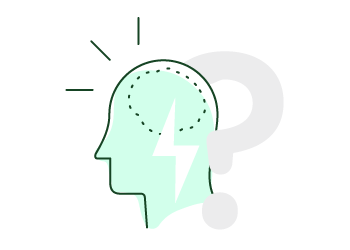Getting Things Done - GTD
The Positive Psychology Behind GTD
AUTHOR: Francisco Sáez“The purpose of life is to discover your gifts; the meaning of life is to give them away.” ~ David Viscott

Positive psychology is a branch of psychology that focuses on the study of optimal human functioning, rather than mental illness. Its objectives are to achieve a complete understanding of the potential in people and help them have a more productive and meaningful life.
Similarly, Positive Psychological Capital is the name given to the state of development of the four components 1 which have a strong impact on your behavior, attitude and performance: self-efficacy, hope, optimism, and resilience.
These components of your personality are not static nor completely genetic. They change often. This means that you can act on them, developing, improving, and using them not only at work, but in other aspects of your personal life.
How does GTD to enhance your Positive Psychological Capital?
Self-efficacy
Self-efficacy is defined as the confidence you have in your ability to achieve objectives. This confidence, by itself, does not make you more able to achieve success, but it does provide you with a greater willingness to work hard at it.
GTD influences the development of your self-efficacy in several ways:
- By defining the 6 Levels of Perspective, GTD helps you create a clear picture of your vision, your goals, and the steps you must take to reach them. By not separating personal from professional life, you get a clearer picture of what’s really important in your life.
- The Processing stage pushes you to identify any open loop and to set the next action step to achieve that result.
- Thanks to the GTD Workflow, you are able to decide in each moment—depending on the context in which you find yourself, your energy and the time you have available—what your next action should be.
Hope
Hope is defined as the availability of willpower and the means to achieve your goals. It results from the interaction between your determination to aim your goals and the planning you do to achieve them.
When you use GTD, all that work you do that precedes action, that is, clarifying what is every thing, identifying what’s next, planning projects, etc., constantly feeds your determination to get results.
Optimism
In this model, optimism is understood as an explanatory style, which seeks internal and permanent causes for the positive events, and external and temporary causes for the negative events. Optimism is, at the same time, a source of hope and confidence.
Obviously, when you are clear about what you should do and what you should not do, how you going are to do it, and you have at your disposal a methodology that helps you make the best decisions in any situation, your optimism is bound to increase. By implementing GTD, your degree of optimism grows as you take control of all the facets of your life.
Resiliency
Your resilience allows you to react to adversity, failure, and the various changes that may occur in your life, positive or negative. This capability allows you to adapt to the environment to get things done, despite the difficulties.
GTD is a system that promises stress-free productivity and it’s precisely this ability to stay relaxed that allows you to be prepared for anything.
Conclusion
If you are able to develop and maintain high levels of self-efficacy, hope, optimism, and resilience, you will not only improve your personal productivity, but have a very valuable capital that allows you to take on anything.
The good news is that all these factors can be learned and trained, and what’s more, GTD can give you a helping hand.
1 Notes:
- Examining Positive Psychological Capital, by Liam Page and Dr. Ross Donohue.
- The Psychology of GTD, Part 1: PsyCap, by The Workologist




No comments